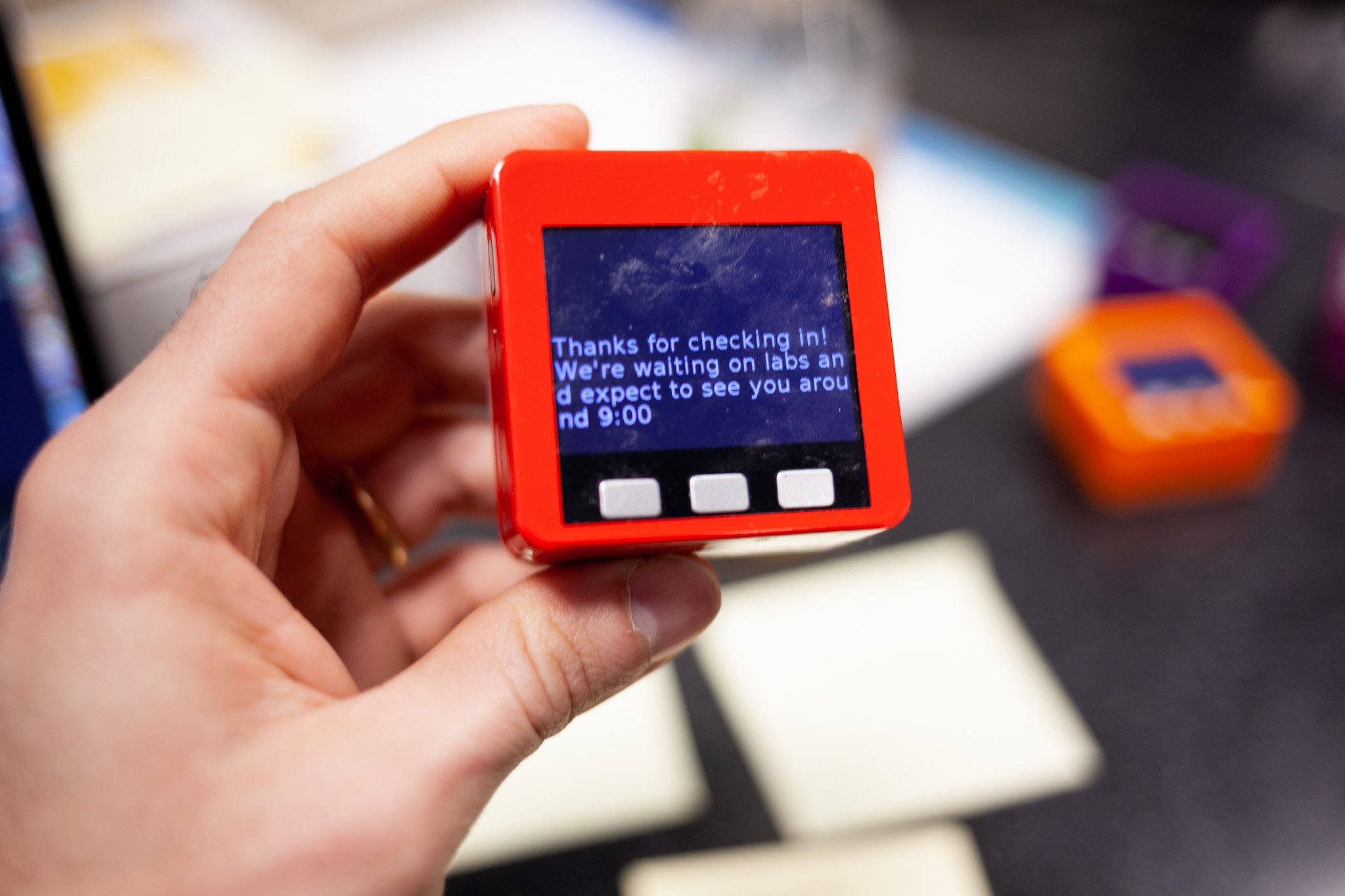Freedom from the Waiting Room
Waiting in a crowded, windowless room for an unknown amount of time is a hallmark of many patient experiences at hospitals. At St. Jude, patients and families are uncommonly sympathetic to wait times but they wanted to find other ways to spend the time. As part of a larger project to redesign the outpatient experience at St. Jude, our IDEO team ran a live prototype to test various forms of two-way communication and streamlined check-in processes to ease the friction in going to see the doctor.
Results from the pilot informed technology investment decisions and design of a new outpatient facility on campus.

Design Process
Doctors and administrators had a very strong hunch that the best way to solve the waiting room problem was through restaurant-style pagers. It seemed simple: If patients could be buzzed to come back to the clinic at a moment’s notice, they were then free to roam outside of the waiting room and that would improve patient satisfaction through feelings of agency and autonomy. The design team prepared a few methods for notifying patients, including some that allowed for simple two-way communication between provider and patient.
Running the Pilot
A software designer, data scientist, and environments designer were the core team that created everything from the check-in screens that interfaced with the hospital’s own registration system to the various form factors for communication systems, i.e. wristbands, pagers, and NFC tags. The team then worked on site with providers during actual clinic hours over three days to test the check-in and notification concepts. Approximately 50 patients participated.








When the Website Crashes
Personal contributions: Two hours into Day 1 of the pilot, our custom-built website crashed. I shifted into crisis management mode and stabilized the team’s morale to reduce panic, then guided them through contingency planning and troubleshooting. The website was back up and running within a few hours and there was no discernible disruption to patient schedules in the clinic. Importantly, the team persevered and we spent that evening tweaking code to improve performance for the rest of the pilot.
Design Outcomes
The live pilot provided several important findings for the design and St. Jude team, including that the pagers were the least favored form factor! Parents did not want another thing to carry around and potentially misplace. Other findings included “order of magnitude” wait time updates were more important than giving a precise, but potentially wrong, wait time at check-in. And, establishing a reliable way to communicate with patient families was more important than being able to physically track them through something like RFID.
The findings from the pilot helped St. Jude avoid making a proposed $1MM investment in technology that wasn’t desirable or feasible and has informed the architectural plans for an upcoming multi-story outpatient building on campus.
Deliverables | Pilot software; communication guidelines; summary data report and implementation guide
Roles | Client leader, healthcare industry guide
Acknowledgements | St. Jude Children’s Research Hospital

